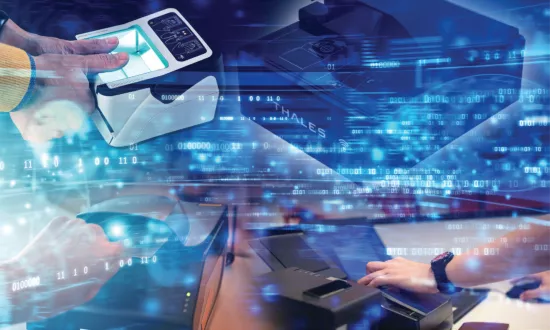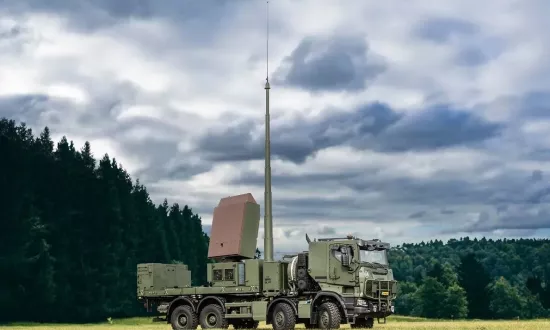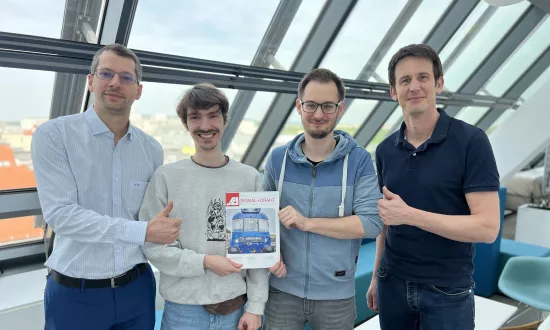Next-generation training for next-generation aircrew
Darryn (Daz) Rawlins, Managing Director, Thales Training and Simulation, UK writes about the difficulties of maintaining pilot training while observing social distancing rules.
If there’s one thing recent events have shown, it’s how much of our day-to-day existence relies on personal and face-to-face interaction. In fact, Covid-19 has highlighted how important it is for our armed forces to have training programmes that can adapt to social distancing and maintain the talent pipeline that underpins a big part of any nation’s defence strategy – even in the face of major and unexpected strategic shocks. So force elements at readiness can be maintained, whatever the circumstances.
So what does that mean for the future of ‘point-of-need’ training – an integral part of any aircrew student’s development? And how do you continue training at a steady pace and allowing for safe social distancing, without jeopardising or compromising training quality and safety?
The tech is available. Why not use it?
At Thales, even before the pandemic struck, we’d been exploring how to make more of fused VR/AR, AI, machine learning and data analytics as part of a point-of-need training architecture. One that enhances the warfighter’s training and brings a raft of other benefits for our armed forces. For example, more expedient and more cost-effective training that uses technology that’s familiar in ‘feel’ to the young modern warfighter. That delivers a more adaptive learning and human-centric training experience. That develops mission-ready aircrew for the front line, faster without compromising safety standards.
I’m not advocating the above technologies as a total replacement for real-life instructors, simulators or actual aircraft. On the contrary, even in a ‘virtual classroom’, students need the human interface in the background enabling the use of relevant and modern cognitive and learning techniques. What I’m advocating is using these technologies in a way that genuinely supports the aircrew student’s transition from training through to physical deployment on the front-line.
By its very nature, the combat training industry is rightly conservative. As many military Training Requirements and Delivery Authorities will recognise, much of today’s training design architecture is based on tried and tested concepts and frameworks that have remained largely unchanged for three or four decades.
It ain’t broke…
Sticking with a tried and tested architecture makes complete sense – if it ain’t broke, why fix it? – but over time this can constrain thinking, as well as hinder the adoption of new approaches and new technologies. And the world is littered with the casualties of organisations that refused to acknowledge or adopt new technology – Kodak, Xerox and Blockbuster to name a few – so it’s vital our industry keeps up with the incredible technological advances in recent years.
In fact, I think it’s fair to say these technologies will become an integral part of any future training system – in particular, for training future generations of pilots for the next generation of combat planes due to come into service between 2030 and 2035. Trainee pilots will need better competency and cognitive skills to fly these future aircraft, and we’ll undoubtedly need to lean on technology to help us train them effectively.
…but it could be better
So how could this new training approach work? Well, the way we see it at Thales, the ‘virtual instructor’ could manage those aspects of learning where more certainty exists including routine handling skills and simple rule-based tasks such as learning aircraft checklists. Cognitive competence and knowledge-based behaviour including decision making and situational awareness could be tested using more complex, synthetic scenario developments, so students learn to manage uncertainty and cope with random events.
To add real value, instructors would not only need to be able to analyse complex data, but also understand how best to help students learn. Automation could play a big part here, especially where an algorithm can replicate the outcome to identify errors and offer corrective action.
Combine this approach with a ‘digital twin’ of the student (the subject of my next article) and you can feed back all the data generated from a synthetic or live mission into an algorithm that a student or instructor can use to test performance. The key point for me is that this approach is focused on human performance.
Bespoke training for better performance
At the moment, a traditional training regime follows a syllabus that’s delivered in an almost word and order-perfect way. However, with these new technologies we can use the data from one mission to develop the competencies the student needs to improve for the next mission – all the while reducing the need to focus on areas the student excels at. This ‘competency progression’ is about finding the right balance of training to develop students in the fastest and most effective way possible. Currently, the traditional training framework doesn't allow this.
For example, the ab-initio A400M training syllabus includes 28 simulator sorties and a handful of live flights. Traditionally, I’d go from one to 28 sequentially and perform each of those 3 hour sorties to the exact instructional specification required for each student. If however, the analytics from sortie one shows I’m a ‘natural’ in a certain area, I can miss out 50% of the next sim. Sim two then brings in part of sim three and so on. This way, I can progress at my own pace and ability, but within the allotted training time. The real art will be to apply the ‘competency progression’ principle to both left and right-hand seat pilots who must progress through the course together. This is where data analytics will come into its own by identifying the overlap areas of each student’s performance.
Ultimately, if you can get the next generation of warfighters to the front line faster – using tools and technologies many of them are ever-more familiar with – that can only be a good thing for training budgets, aircrew performance and armed forces readiness.


